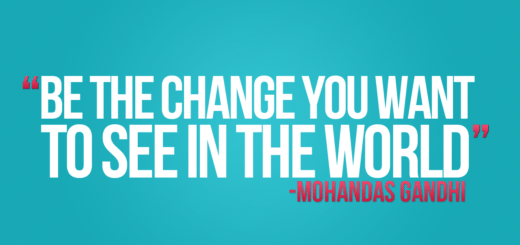GoFundMe Has Been Taken Over By Hedge Funds
The Dark Side of GoFundMe
Comment: GoFundMe is also highly politicized denying Kevin Annett his donations and GoFundMe kept his donations.
DEC 09, 202010:29 AM

The following article is a written adaptation of an episode of Thrilling Tales of Modern Capitalism, Slate’s new podcast about companies in the news and how they got there.
The We Build the Wall campaign started on GoFundMe in December 2018, soliciting individual donations for a wall on the U.S. border with Mexico. The wall was one of President Donald Trump’s central campaign promises, but Democrats in Congress had blocked the funding. The plan, says writer Rachel Monroe, who reported on GoFundMe for the Atlantic, “was that they were going to raise a billion dollars and deliver it to Donald Trump, who would then use it to build his big, beautiful wall.”
This campaign went viral. It raised more than $25 million from regular people donating hard-earned cash. Some of that money paid a private contractor to erect a small section of wall. After it went up, there was a celebration at the building site just outside El Paso, Texas, featuring appearances from various right-wing luminaries who’d been involved in the campaign.
But it seems that a lot of the money from the GoFundMe page wasn’t spent on the wall—and instead went straight into the pockets of some of the organizers, including Brian Kolfage, the public face of the campaign, and Steve Bannon, the former Trump adviser. This past August, Kolfage, Bannon, and two of their associates were charged with defrauding hundreds of thousands of donors.
Kolfage had previously been kicked off of Facebook for spam activity, and according to Rachel Monroe, he saw GoFundMe as a sort of Facebook alternative, a place where you can post your content and push it to go viral—but instead of likes, what you get back is hard cash. “The sense that I get is that he realized, Oh, here’s a new platform, one that I haven’t been banned from, that is a way to not only disseminate ideas but also make money while doing it,” Monroe says.
GoFundMe has been around for more than a decade, and it has become a huge force in the world of philanthropy. But this We Build the Wall campaign, in both its stated intent and its criminal outcome, touched on a lot of things that make people uncomfortable with GoFundMe. Like the idea that it turns charity into another form of social media. That it enables scams on a massive scale. That it encourages people to replace government action with privately funded initiatives.
But according to Laura MacDonald, chair of Giving USA Foundation and an expert on nonprofits, the idea that more charismatic or better-framed causes might win lots of donor money—while equally deserving but less slickly presented causes get ignored—is by no means unique to GoFundMe: “There is no end of worthy causes out there, and if all you want to do is say ‘our organization’s so worthy, our work is so important,’ that is simply going to put you on a level playing field with hundreds, if not thousands, of other equally worthy organizations.” She says people asking for help in any venue won’t succeed without making their case in a compelling way.
MacDonald also isn’t concerned that GoFundMe might cannibalize donations from established charities: “Charitable giving makes people feel good. Giving makes people feel good. And so if they make a gift to a neighbor in need, a household that’s been affected by the fires out west, or will be affected by the hurricanes in the Gulf, and they make a direct gift to an individual and that makes them feel good, I think that only increases the likelihood that they’ll also see an opportunity to express their generosity to the local food bank or college or university or what have you. So if there is resentment, I haven’t encountered it, and I would call it misplaced.”
But MacDonald still thinks there are some problems with GoFundMe. For one thing, she says, it allows scammers to thrive in a way that would be far harder to pull off using a more traditional fundraising approach. There’s a site called GoFraudMe that catalogs shady doings on GoFundMe. You can find people faking cancer diagnoses to get a few thousand bucks, or starting a campaign on behalf of a needy friend and then just keeping the money. And, of course, there’s the We Build the Wall fiasco, where the organizers bilked millions of dollars out of unsuspecting GoFundMe users.
“It allows these organizations to move at lightning speed, so quickly that it’s difficult to really thoroughly vet the validity of the cause and the use of the funds,” MacDonald says. “Which isn’t to say that there haven’t always been abuses in charitable giving. But I do think that these platforms do enable an organization to pop up, exploit the marketplace sentiment, and then just as quickly fall back and not really leave the kind of trail that more traditional organizations leave when they’re doing their fundraising.”
She also thinks GoFundMe can encourage what she calls fast-food philanthropy—a quick jolt of self-satisfaction, instead of a commitment to making recurring gifts to a cause or institution we want to support for the long haul. “Frankly I think that a year later, people probably aren’t even giving a second thought to the $25 gift that they made to that hurricane victim. … A gift of that magnitude, it’s what I would call a go-away gift. It’s like, ‘My friend asked me to do this. I’m going to make a gift that’s enough to say I lent a hand, but other than the sort of immediate gratification thing, it’s not really something that I’m emotionally invested in.’ ”
Turning health care funding into a contest, with the losers unable to pay for treatment, seems like a bad road to head down.
In the early days of GoFundMe, its co-founders bootstrapped their project, meaning they raised enough money to run it themselves, instead of getting big outside investments with strings attached. They felt that gave them some independence over how they ran GoFundMe. But in 2015, they allowed investors to take over the company, accepting venture capital money that valued GoFundMe at about $600 million. The company had been headquartered in San Diego since its launch, but now it opened up new offices in Silicon Valley. It also appointed a new CEO, Rob Solomon, who’d previously been at Groupon, where he’d scaled up that company’s blend of social connection and commerce. In an interview a couple of years ago, Solomon made clear the new VC backers behind GoFundMe had high expectations. He said, “The investor group that put money into GoFundMe backed Facebook and LinkedIn and Expedia and Netflix. So their hope is that we can do for the giving space what LinkedIn did for jobs, or Netflix did for entertainment, or Twitter or Facebook have done for communications. They think that we can create a big network company that changes the space in giving and disrupts the space.” As Monroe put it, “you started to see some of the language go from We want to be your home for giving to We want to be this enormous company where every charitable donation flows through our platform in some way.”
This year, Solomon was replaced by another CEO, Tim Cadogan, who has a background in programmatic advertising, continuing the thread of marketing expertise that runs through GoFundMe’s DNA. It’s a clue that the site is hoping to extend its reach even further. GoFundMe still represents a very small portion of America’s philanthropic activity, but it says it’s processed more than $9 billion worth of donations so far. Its major goal these days is to convince large institutions, places like UNICEF, to start doing their fundraising on GoFundMe. And as it keeps trying to grow and bring more kinds of giving under its umbrella, GoFundMe might even start to have real influence on America’s social compact.
A large percentage of donations on GoFundMe go toward helping people with illnesses and large hospital bills, people in need of medical procedures. Turning health care funding into a contest to see who can put up the most compelling GoFundMe page, with the losers unable to pay for treatment they need, seems like a bad road to head down.
“I don’t think that it’s in itself a bad idea to have this platform that makes it really easy to pool money to a person who needs it,” Monroe says. “But when it gets troubling to me is when that starts acting as though it’s going to replace other kinds of giving. And that’s always been a tough spot for the executives to talk about, to realize that they are in some ways benefiting by the holes in the social safety net.”
GoFundMe used to charge a 5 percent fee on donations made through its platform, but in 2017 it dropped that fee. Now, when you make a donation through GoFundMe, the site suggests you tip the company. The default tip is 15 percent. The other options are 10 percent and 20 percent. To tip nothing, you have to click “other” and enter zero as your tip. “It seems strange to me to think that you would be tipping a corporation,” Monroe says, “but apparently it’s a viable enough business model that they’ve kept on that tipping model.”
In other words, GoFundMe itself is relying on donations for support, just like its users do. Well, sort of. Its users beg for the donations they get. GoFundMe just piggybacks on their efforts, hoping to get another cut out of the kindness of people’s hearts—or out of people not noticing a 15 percent tip is GoFundMe’s default option. In one sense, I do have to credit GoFundMe for putting their money where their mouth is, by making its revenue a charitable gift of sorts. At the same time, I don’t love what this implies: a future where all of our income is derived from the kindness of strangers, where all our needs are either met or not met because someone felt moved to drop a little change into our cups.
Listen to the full episode using the player below, or subscribe to Thrilling Tales of Modern Capitalism on Apple Podcasts, Overcast, Spotify, Stitcher, or wherever you get your podcasts.














